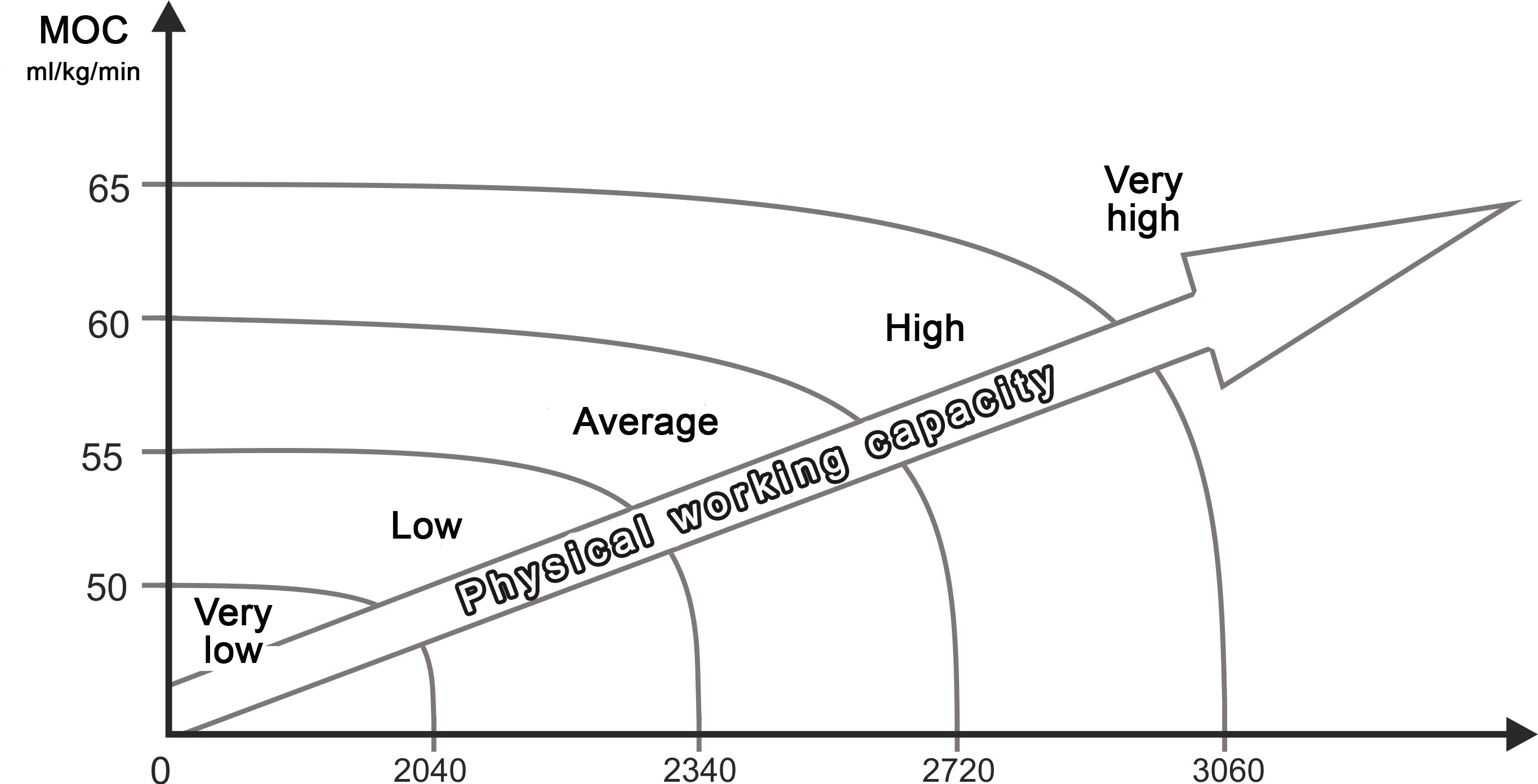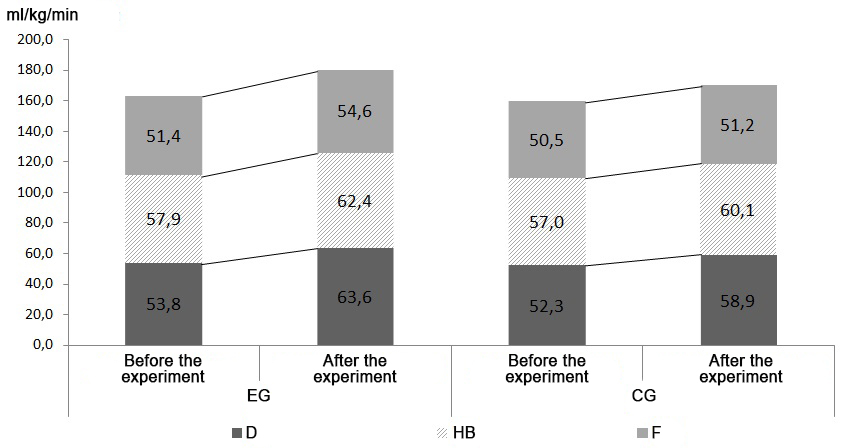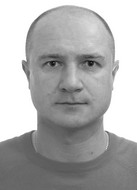Modern peak-tests to rate working capacity in football
Фотографии:
ˑ:
PhD, Associate Professor A.V. Antipov1
PhD, Associate Professor V.V. Presnyakov2
Dr.Hab., Professor, Honorary Figure of Russian Higher Education V.P. Guba3
1Moscow State Regional University, Moscow
2Military Academy of Army Air Defence of the Armed Forces of the Russian Federation, Smolensk
3Smolensk State University, Smolensk
Keywords: football, physical working capacity, method, control, peak-test.
Introduction. A well-structured system of management of changes in the athletes’ body is a necessary element of control of the training process in football [1, 9]. It implies a mandatory assessment of the training efficiency, rationalizes the selection of appropriate training tools based on the information received about the nature of the work performed and adaptive changes in the body under the influence of fluctuating training loads [2, 6, 8].
It is recommended to evaluate physical working capacity using direct tests, which diagnostic value is higher than that of indirect methods. Among such direct method is the "peak-test" [7].
Peak-test is a method of testing of aerobic working capacity based on the results in walking and shuttle run performed with gradually increasing speed set by sound signals produced by an audio system [4]. The test aims to reach the individual maximum value. It is distance and maximum speed that are measured by means of the peak-test. In athletes, these values are closely associated with the maximal oxygen consumption (MOC) values. The test is a shuttle run on a ground 20 m long [3, 5]. The rate (speed) and travel time between the two parallel lines are regulated by audio signals. The athletes’ fitness level is estimated in the test by the number of distance segments covered (Figure 1).

Fig. 1. Physical working capacity in 15-16 year-old football players measured by means of "Peak-test"
Peak-test is applicable to athletes of all ages, specializations and skill levels.
Objective of the study was to rate physical working capacity in 15-16 year-old football players using a run test ("peak-test").
Methods and structure of the study. The study involved the 15-16 year-old football players of one of the Moscow academies, who made up the Experimental Group (EG). At the preparatory stage, the team attended the training sessions on a one-time basis. This stage included the general preparatory and special preparatory periods. Training and improvement of their technical and tactical skills, as well as development of their physical qualities, was carried out in accordance with the passport and biological age of the boys. In addition, as a control exercise, the EG subjects performed the peak-tests 2 times a week throughout the entire preparatory period.
The Control Group (CG) was made of the football players trained in accordance with the standard program of physical education. The peak-tests were applied only at the beginning and at the end of the experiment.
Results and discussion. During the educational experiment we analyzed the 15-16 year-old football players’ physical working capacity using the peak-test. The obtained data were processed based on the game role of each team player.
Before the experiment, the subjects of both the EG and CG did not differ significantly in terms of their physical fitness level. The analysis revealed that the maximum distance covered by the football players of the EG, irrespective of their position, increased statistically significantly (p<0.05), while the result demonstrated by the defenders (D) was 2960±145 m (p<0.01).

Fig. 2. Dynamics of peak-test results in 15-16 year-old football player in terms of distance covered (m)
In the CG, the distance covered by the football players increased significantly only in the defenders and halfbacks (HB). The peak-test results in the forwards (F) increased insignificantly (p>0.05) and amounted to 2112 ± 81 m.
The analysis of the MOC data revealed a significant increase in the indices of all football players of the EG (p<0.05). Moreover, the highest values were registered in the defenders, their result was 63.6±0.6 ml/kg/min. In the CG, MOC increased significantly only in the defenders. The football players of other positions did not have any significant increase (p>0.05), with that, the forwards demonstrated the lowest increase of all (by 0.7 units), which equaled 51.2±0.4 ml/kg/min, respectively (Figure 3).

Fig. 3. Changes in maximal oxygen consumption of 15-16 year-old football players in peak-test (ml/kg/min)
The analysis of the peak-test results in terms of the football players’ physical fitness of the age under study revealed that, for the purpose of test validity, at the beginning and at the end of the experiment it is necessary to additionally test physical fitness of the football players acting in all play roles in each team. The tests included the following exercises: 30m run, 7x50m shuttle run, Cooper test (12min flat race) and standing long jump. The test results are presented in Tables 1 and 2.
Table 1. Physical fitness indices in EG football players as a result of educational experiment
|
Test |
D |
HB |
F |
|||
|
|
Р |
|
p |
|
p |
|
|
30m run, sec |
4.6±0.3* 4.5±0.2** |
>0.05 |
4.7±0.4 4.5±0.3 |
<0.05 |
4.7±0.2 4.6±0.4 |
>0.05 |
|
7х50m shuttle run, sec |
65.1±0.6 62.2±0.5 |
<0.01 |
63.6±0.5 62.4±0.4 |
<0.05 |
64.8±0.7 63.8±0.8 |
>0.05 |
|
12min flat race, m |
2958±46 3188±38 |
<0.01 |
2913±41 3098±49 |
<0.05 |
2902±52 3058±31 |
<0.05 |
|
Standing long jump, cm |
238±5.5 256±6.0 |
<0.05 |
242±4.7 258±5.0 |
<0.05 |
246±5.3 259±4.9 |
<0.05 |
Note: * – before the experiment; ** – after the experiment
From the table data it follows that in the EG the physical fitness indices increased statistically significantly in the football players acting in all game roles. It is only the starting speed rate in the defenders and special physical fitness indices in the forwards that increased insignificantly (p>0.05). At the same time, the indices of special and general endurance in the defenders increased statistically significantly (p<0.01).
Table 2. Physical fitness indices in CG football players as a result of educational experiment
|
Test |
D |
HB |
F |
|||
|
|
P |
|
p |
|
p |
|
|
30m run, sec |
4.6±0.4 4.6±0.3 |
>0.05 |
4.8±0.4 4.5±0.3 |
<0.05 |
4.7±0.3 4.4±0.5 |
<0.05 |
|
7х50m shuttle run, sec |
66.2±0.5 64.7±0.4 |
<0.05 |
65.7±0.3 65.2±0.5 |
>0.05 |
66.2±0.2 65.6±0.4 |
>0.05 |
|
12min flat race, m |
2961±37 3104±41 |
<0.05 |
2923±41 2998±49 |
>0.05 |
2920±44 3018±37 |
>0.05 |
|
Standing long jump, cm |
242±4.5 249±5.1 |
>0.05 |
248±4.3 253±5.6 |
>0.05 |
251±4.6 260±4.2 |
<0.05 |
In most tests, there was no significant increase in the results in the CG (p>0.05), with the exception of the defenders’ results in 7x50m shuttle run and Cooper 12min tests (p<0.05) determining their special and general endurance, which is consistent with the physical working capacity rates in the peak-test.
Therefore, this proves the objectivity of the results of the peak-test used in the training process of football players. During the educational experiment, the EG subjects significantly improved their physical working capacity, which also indicates proper planning of the training process, selection of the effective training tools and methods.
Conclusion. The modern peak-tests reasonably applied in the training process make it possible to objectively rate the physical working capacity in football, with the test rates convertible in the qualitative working capacity figures (MPK), and with the run distance rates applied to effectively assess and forecast the individual functionality resource.
References
- Golomazov S.V., Denisenkov A.S. Vozrastnaya dinamika pokazateley fizicheskoy i tekhnicheskoy podgotovlennosti futbolistov 11-16 let. Metodicheskaya razrabotka dlya studentov spetsializatsii «Futbol» [Age-related dynamics of physical and technical fitness indicators of 11 to 16 year old football players. Tutorial for students majoring in footall]. Moscow: RSUPESYT publ., 2005, 24 p.
- Guba V.P., Shamardin A.A. Kompleksny kontrol integralnoy funktsionalnoy podgotovlennosti futbolistov [Integrated control of integral functional fitness of footballers]. Moscow: Sovetskiy sport publ., 2015, 284 p.
- Guba V.P., Senkina G.E. Matematicheskie metody v pedagogicheskoy teorii i praktike (izmereniya, vychisleniya, metody matematicheskogo modelirovaniya i statistiki) [Mathematical methods in theory and practice of pedagogics (measurements, calculations, methods of mathematical modeling and statistics)]. Moscow: Print-Ekspress publ., 2011, 270 p.
- Guba V.P., Stula A. Metodologiya podgotovki yunykh futbolistov. Uchebno-metod. posobie [Methodology for training of junior football players]. Moscow: Chelovek publ., 2015, 184 p.
- Guba V.P., Presnyakov V.V. Metody matematicheskoy obrabotki rezultatov sportivno-pedagogicheskikh issledovaniy. Uchebno-metod. posobie [Methods of mathematical processing of sports pedagogical research data. Teaching aid]. Moscow: Chelovek publ., 2015, 289 p.
- Guba V.P., Leksakov A.V. Teoriya i metodika futbola. Uchebnik [Theory and methodology of football. Textbook]. Moscow: Sovetskiy sport publ., 2013, 536 p.
- Guba V.P., Skripko A., Stula A. Testirovanie i kontrol podgotovlennosti futbolistov [Testing and monitoring of fitness in footballers]. Moscow: Sport publ., 2016, 168 p.
- Iordanskaya F.A. Diagnostika funktsionalnoy podgotovlennosti yunykh sportsmenov raznogo vozrasta i pola. Metod. posobie [Diagnostics of functional fitness of junior athletes of different age and sex.]. Moscow, 1993, 112 p.
- Guba V.P., Kvashuk P.V., Krasnoshchekov V.V., Ezhov P.F., Blinov V.A. Futbol: primernaya programma dlya detsko-yunosheskikh sportivnykh shkol, spetsializirovannykh detsko-yunosheskih shkol olimpiyskogo rezerva [Football: sample program for children's and youth sport schools, specialized children's and youth schools of Olympic reserve]. Moscow: Sovetskiy sport publ., 2010, 128 p.
Modern football requires high working capacity being developed in the players so they could keep the highest game pace with no detriment to the performance quality and efficiency. The physical working capacity of junior players shall be rated by the coach on a real-time basis to effectively build up and manage the sport form of the players in the long-term training process. The article analyzes benefits of the modern peak-tests of the physical working capacity in football.
The study shows that the modern peak-tests reasonably applied in the training process make it possible to objectively rate the physical working capacity in football, with the test rates convertible in the qualitative working capacity figures (MPK); and with the run distance rates applied to effectively assess and forecast the individual functionality resource.




 Журнал "THEORY AND PRACTICE
Журнал "THEORY AND PRACTICE